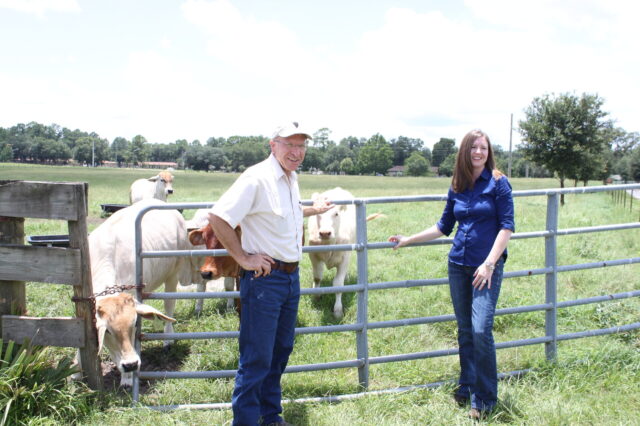New species of parasite discovered as disease agent in domestic cats

University of Florida researchers have identified a new species of Tritrichomonas in domestic cats, distinguishing the parasite that causes the disease in felines from the agent long thought to affect both cats and cattle.
Although the disease is just beginning to be understood and tested for in cats, it costs cattle producers millions of dollars each year in lost revenue, researchers say.
“Up to now, there has only been one species, Tritrichomonas foetus, described in the reproductive tract of cattle and the intestine of cats,” said Heather Walden, Ph.D., a research assistant professor in the UF College of Veterinary Medicine, a part of UF Health. “We conducted experimental studies putting the feline isolate in cows and the bovine isolate in cats, and saw differences in the disease-causing capacity in each of these animal hosts.”
These studies, combined with molecular analysis of a small group of genes with similar sequencing patterns in cats and in cattle, noted key differences between the species. The study and findings appeared online in a recent issue of Parasitology Research. Walden named the newly discovered species Tritrichomonas blagburni in honor of Byron Blagburn, Ph.D., the Auburn University professor who was her mentor and led her doctoral studies there. “Although we were not the first to note that there were differences genetically between the pathogens that cause trichomoniasis in both cats and cows, in previous studies, many people focused on the genetics of the organism in order to determine species,” Walden said. “Our thought was, you have to look further at hosts and disease states in addition to some of the genetics.”
Feline trichomoniasis is an intestinal disease that results in chronic diarrhea, flatulence and fecal incontinence. Bovine trichomoniasis is a sexually transmitted disease of cattle that infects the reproductive tract of cows, causing uterine infections and possible mid- to late-term abortions.
“In cats, people are becoming more aware of the disease and testing for it more frequently now,” Walden said. “Treatment of cats with this disease is problematic — it sometimes works and sometimes doesn’t.”
In cattle, however, there is no treatment that prevents infection and the disease is very difficult to test for, particularly in big herds, Walden said.
“It’s one of those things where often the cattle owner will just cull the bulls or the cows that show symptoms of the disease,” she said. “Some cattle owners may try to control the disease through the use of artificial insemination, but that’s expensive and most owners won’t take that approach.”
Raoul Boughton, Ph.D., heads the Disease Ecology Program at the Archbold Biological Station in Venus, Fla. He said Tritrichmonas foetus of cattle was a disease of “high economic concern” that can lead to the loss of 20 to 40 percent of calves from an infected herd.
He called Walden’s work on understanding the genetic relationship and ecology of infection of the Tritrichomonas species “an important step if we are to further our understanding and develop a solution to controlling this parasite that costs the cattle industry hundreds of millions of dollars a year in lost revenue.” Walden’s research group is now analyzing additional genes from a conserved genetic area obtained from parasites found in domestic cats and parasites obtained from cattle in order to characterize more genetic differences and help solidify the previous findings.
“The research by Dr. Walden and the description of Tritrichomonas blagburni and its association with different pathogenicities in the cat and cattle performs the great service of distinguishing these very similar agents, their hosts, and the diseases they cause in their respective hosts,” said Dwight Bowman, Ph.D., a professor of parasitology at Cornell University’s College of Veterinary Medicine.
“This is good for cats because it removes them as the reservoir source for infections of cattle on farms,” he added.
Other investigators involved in the study include a team of scientists from Auburn University and Virginia Tech. Walden completed her doctoral program at Auburn in 2008, focusing her dissertation on protozoan parasites, specifically Tritrichomonas foetus.
About the author
